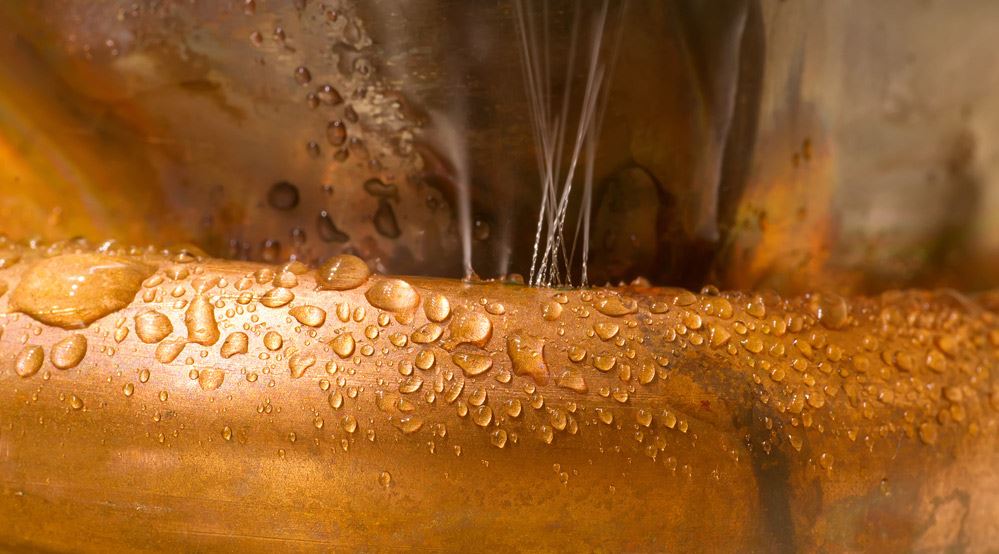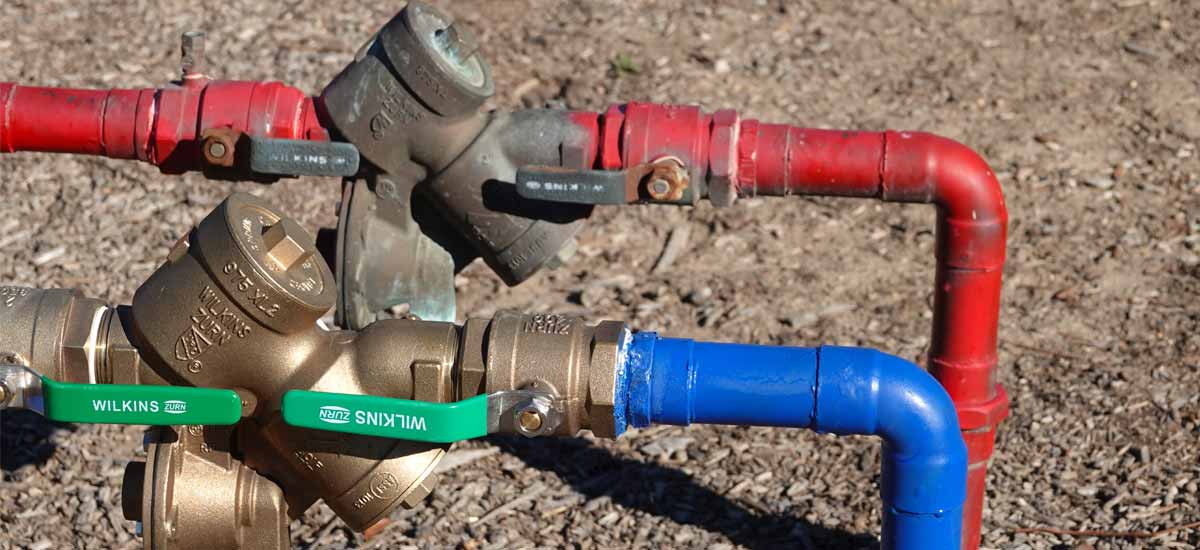Surfing Pipelines In Winter Weather
Although Southern California winters don’t experience freezing temperatures, it’s still important to prepare your residential or commercial plumbing for the season–especially outdoor sprinkler and irrigation systems! With the winter season already upon us, property managers and owners might still need to tie up some loose ends to prepare pipes and drains for colder weather.Here is the ultimate guide on how to prepare your plumbing system for the winter months. For any additional questions about plumbing issues or preparation, contact your local plumbing experts At Gallegos Plumbing.

We’re here to answer any questions and make plumbing a breeze. For all inquiries or to schedule an appointment call us direct at (805) 243-2622.
Getting Your Water System Ready For Winter
Besides hiring a plumbing contractor to inspect your pipes and drains, what else can homeowners and property owners do to get their water systems ready for the sudden drop in temperatures? Lucky for you, Gallegos Plumbing has compiled this list of tips and tricks to help you optimize your plumbing for one of the harshest seasons of the year. Let’s get started!
» Turn Off Outdoor Faucets
To prevent your sprinkler/irrigation system from freezing or bursting, be sure to shut off your outdoor faucets. To do this, simply open the faucet and then the bleeder cap on the shutoff valve to drain any water out of the pipe. Keep in mind that if you don’t drain the pipe, it can still freeze and crack. To catch any possible drips, leave the bleeder cap open with a bucket underneath it. If you notice any excess or continual dripping, your shutoff valve ought to be replaced by a plumbing professional. If you have any trouble locating the shutoff valve, contact your local plumbing contractor.
» Disconnect Outdoor Hoses
As you might already suspect, a hose filled with water and left out in cold weather can freeze. Additionally, when a hose is left connected to the faucet, ice can back up into the pipe inside your house, which causes unwanted cracks. To prevent this chain of events, simply disconnect all hoses from their faucets, drain them, and store them safely for the winter.
» Insulate + Cover Hose Bibs
Even in California, it’s important to make sure your pipes don’t get too cold, since this increases the risk of cracking and bursting. Investing in insulated covers will slow the heat loss from a pipe as it travels through the wall out into the cold. Not only is this solution cost-effective with most covers going for $3 at major home centers, they provide property owners a little extra protection and peace of mind.
» Opt For WiFi Updates + Warnings
If you have a Wi-Fi thermostat, you can control and monitor your home’s temperature using your smartphone or other mobile device. Since it’s important to keep your indoor temperatures moderate throughout winter, you’ll want to set up email or text alerts for when/if the temperature in your home/building suddenly drops. This will keep your indoor pipes from getting too cold. If you want to consider investing in a Wi-Fi thermostat this winter season, you can choose one according to your budget at a local home center (they typically cost anywhere from $100 to $500).
» Install Heat Cable(s)
Did you know that heat cables are a smart solution for vulnerable pipes? That’s because they have an integral thermostat that senses pipe temperature, turning the heat on and off as needed to prevent your pipes from freezing. Keep in mind that you’ll need an accessible outlet to plug in the cable. You will also need to measure the distance to determine the length of cable you require.
» Seal Jim Roists
More often than not, jim roists are vulnerable to intruding cold air. To prevent this cold air from reaching your pipes and plumbing system, be sure to seal any cracks or holes using expandable foam and then insulate between the floor joists. Also, don’t forget to inspect the holes where cables, wires, or pipes pass through an exterior wall. Insulate where you can, and seal any potential drafts with caulk or expandable foam.
» Shut Off The Main Water Line When Leaving Town
Some families and individuals travel during the Holidays and/or winter break. If you plan on leaving town for a few days or more this winter season, just remember to turn your water off at the main shutoff. This minimizes any potential damage in the event that your pipes in fact freeze or crack. Additionally, shutting off an automatic icemaker will reduce energy waste and plumbing risks!

» Consider Garage Door Insulation
For homes and buildings that have water lines in garage spaces, you might want to consider investing in garage door insulation. If your budget or time does not allow for this expense, you can use space heaters to keep your garage temperatures moderate this winter. Your pipes will thank you!
» Keep Cabinet Doors Open
Because kitchen and bathroom plumbing is typically concealed in cabinets, pipes in these areas can be vulnerable since indoor heat can’t necessarily reach them. To prevent these indoor pipes from getting too cold, keep cabinet doors open in order to allow heat to circulate into these spaces. You can even use a fan or portable heater pointed towards open cabinets to circulate constant warm, temperate air.
» Let The Faucet Trickle
Another preventive measure against freezing or cracking pipes is to allow your faucets to trickle during the coldest weeks of winter, especially if and when you leave home for extended periods during the holiday season. This simply relieves any pressure that might build-up, eliminating the costly risk and repair of bursting pipes.
Bonus Preparation Tips
Although winter is already underway, there are still plenty of maintenance hacks that can ensure no plumbing issues arise this season. Here are some extra tips to keep your plumbing system extra safe this time of year and all year round!
» Find Out Where Your Main Water Valve Is Located
For any property owner or manager, it’s important to know where the main water valve is located in case of a major incident, like a pipe bursting, in which you will need to immediately shut off all the water in your home or building. Typically, the main water valve is located next to or near the water meter and ought to be kept in good condition. We suggest opening and closing your main water valve at least once a year to keep it in good condition. For any questions concerning your main water valve, contact the manufacturer or your local plumbing professional.
» Check On Your Water Heater
Warm and hot water is a must–especially throughout the winter. That’s why it’s important to have your water heater checked for any possible build-up and corrosion during this time of year. Over time, water heaters become susceptible to sediment deposits and rust formation, which actually compromise the flow of hot water in your house. Additionally, any rusting can lead to cracks, which in turn cause dangerous leaks. To prevent the inconvenience of lacking hot water and also protect the structural integrity (and safety) of your home, we suggest having your water heater inspected at least once a year for maintenance and repair.
» Don’t Forget Your Sump Pump
In most homes or buildings, sump pumps are located underneath basements and crawl spaces, serving the purpose of getting rid of pooling water. More often than not, the sump pump is contained within a pit where water is drained, and the pump itself can be found under a circular lid through which water pipes travel.
To check the condition of your sump pump before calling a plumbing professional, simply open the lid and inspect the pump for any sign of build-up or drainage issues. If your sump pump is filled with sediment or drains slowly, you should have it inspected by a certified plumbing professional to prevent any serious plumbing issues down the line.
» Clean Your Rain Gutters Thoroughly
Although there is less risk on this front in coastal areas, it’s still important to have your rain gutters cleaned regularly. Excess build-up in the rain gutters can lead to overflowing water and ice during a freeze, or even dangerous ice dams. If you encounter any ice dams or excessive build-up, use calcium chloride to melt the ice and consider investing in additional insulation.
Do you have any additional questions about how to optimize your plumbing system for the colder months of winter? Don’t hesitate to contact Gallegos Plumbing today with any inquiries or to schedule an inspection. Just call us at (805) 243-2622 or leave a message here.

